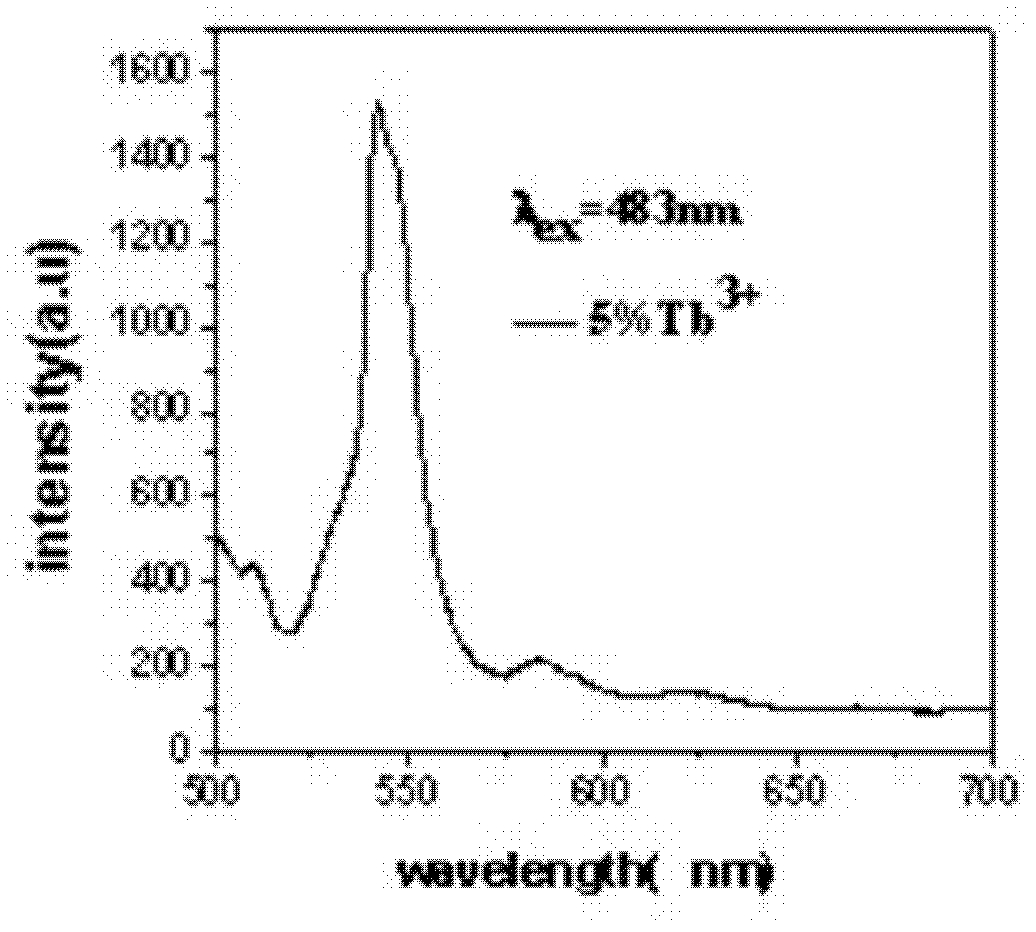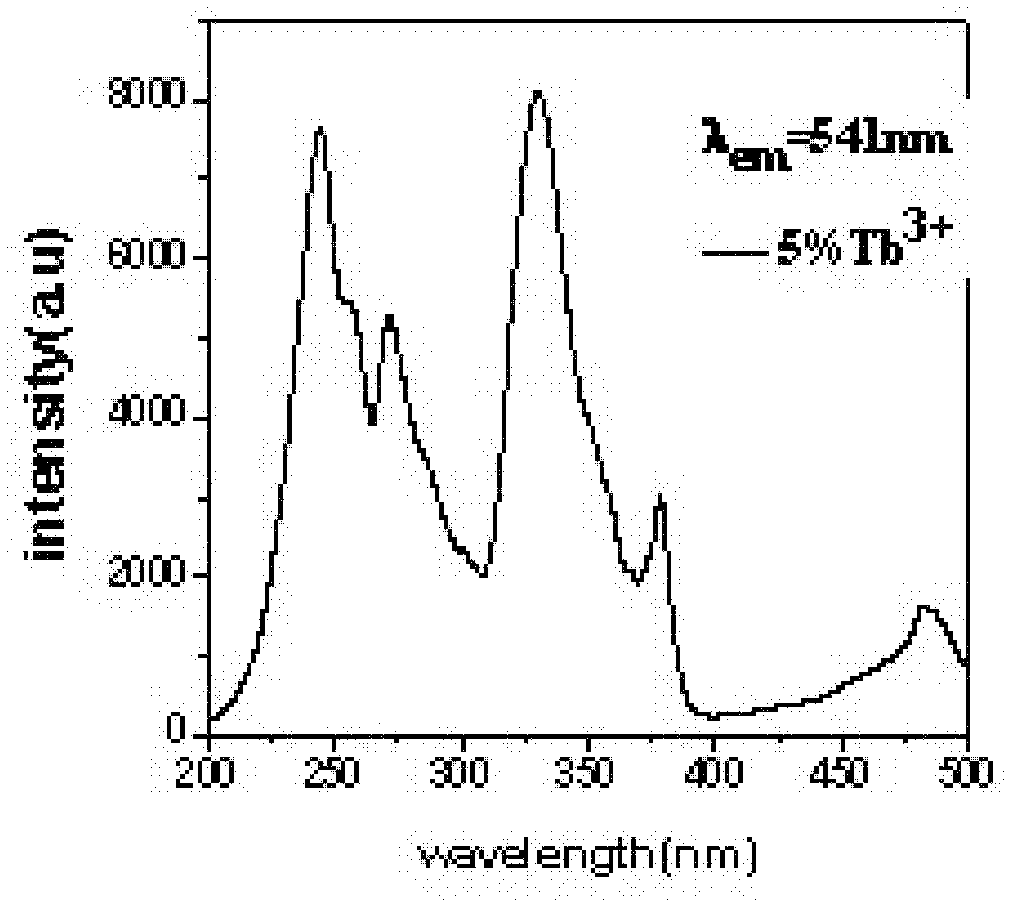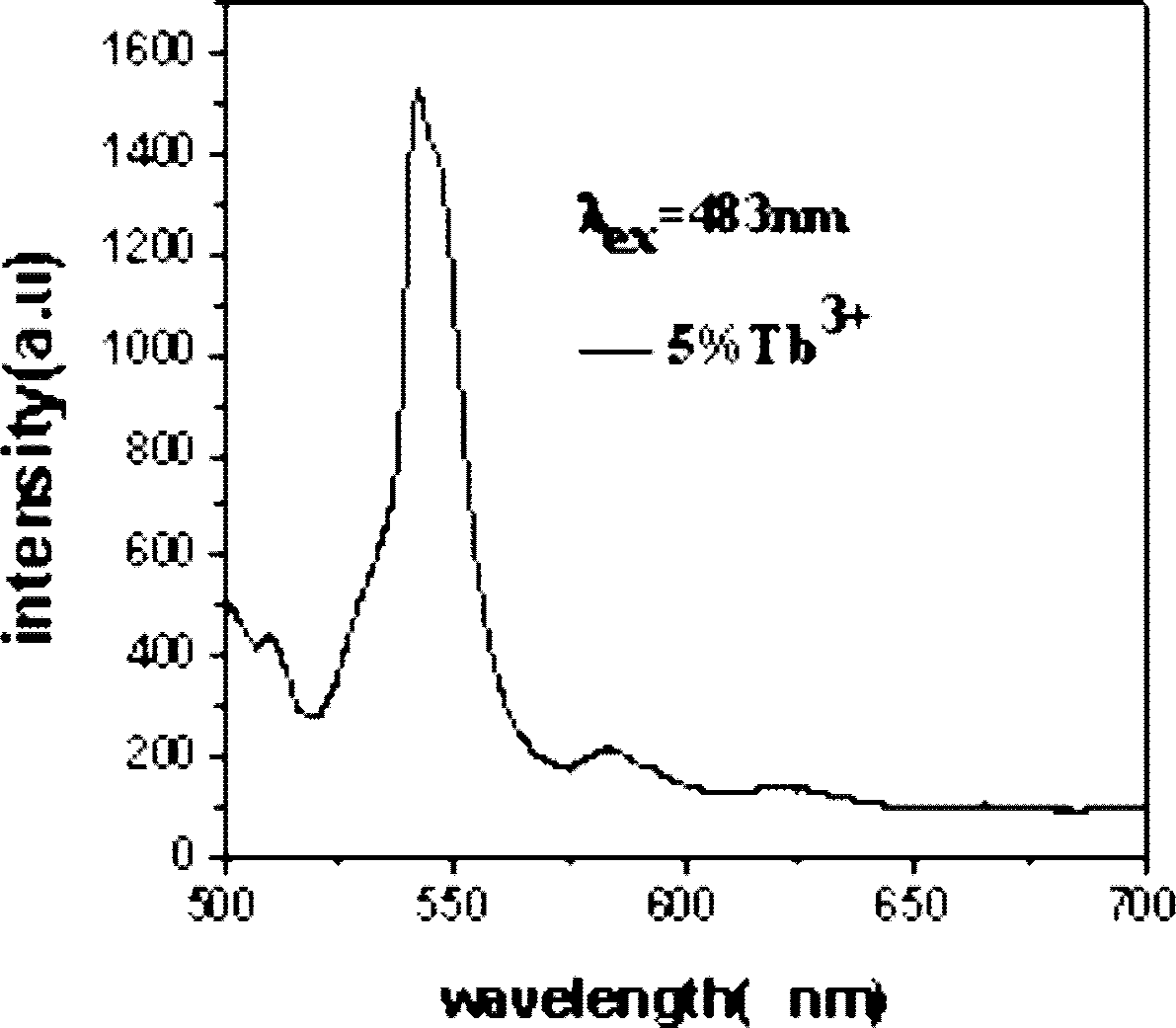Yellow light-emitting low temperature co-fired ceramic material and preparation method thereof
A technology of low-temperature co-fired ceramics and ceramic materials, applied in the field of electronic ceramic materials and luminescent materials, to achieve the effects of low synthesis temperature, improved luminous efficiency, and low sintering temperature
- Summary
- Abstract
- Description
- Claims
- Application Information
AI Technical Summary
Problems solved by technology
Method used
Image
Examples
Embodiment 1
[0034] 1) Weigh the analytical pure according to the following ratio, accounting for 60% Si(OC 2 h 5 ) 4 , CaCO with a molar percentage of 15% 3 , 15% B by mole percentage 2 o 3 The corresponding amount of H 3 BO 3 , the corresponding amount of Tb containing Tb with a molar percentage of 5% 4 o 7 and 5 mole percent contains K corresponding to the amount of K 2 CO 3 . First, pour analytical grade ethanol into the Si(OC 2 h 5 ) 4 (volume ratio of ethyl orthosilicate:ethanol = 1:1), and adding stabilizer acetic acid, stirring at room temperature to obtain an organic solution.
[0035] 2) CaCO 3 , Tb 4 o 7 and K 2 CO 3 Put the powder into a beaker and add HNO 3 solution (water: HNO 3 volume ratio = 1:1) to dissolve until clear to obtain an inorganic solution.
[0036] 3) Slowly pour the inorganic solution into the organic solution, use nitric acid as a catalyst and adjust the pH value of the solution to 3 with nitric acid, and stir in a water bath at 80°C fo...
Embodiment 2
[0042] 1) Weigh the analytical pure according to the following ratio, accounting for 65% Si(OC 2 h 5 ) 4 , CaCO with a molar percentage of 15% 3 , B with a mole percentage of 13% 2 o 3 The corresponding amount of H 3 BO 3 , 2.5% molar percentage containing Tb, Ce corresponding to the amount of Tb 4 o 7 and CeO 2 And the mole percentage is 3.5% contains K corresponding to the amount of K 2 CO 3 . First, a certain amount of analytically pure ethanol was poured into the Si(OC 2 h 5 ) 4 (volume ratio of ethyl orthosilicate:ethanol = 1:1), and adding stabilizer acetic acid, stirring at room temperature to obtain an organic solution.
[0043] 2) CaCO 3 , Tb 4 o 7 , CeO 2 and K 2 CO 3 Put the powder into a beaker and add HNO 3 solution (water: HNO 3 volume ratio = 1:1) to dissolve until clear to obtain an inorganic solution.
[0044] 3) Slowly pour the inorganic solution into the organic solution, use nitric acid as a catalyst and adjust the pH value of the ...
Embodiment 3
[0049] 1) Weigh the analytical pure according to the following ratio, accounting for 70% Si(OC 2 h 5 ) 4 , the molar percentage is 18%CaCO 3 , 10% by mole of B 2 o 3 The corresponding amount of H 3 BO 3 , the corresponding amount of Tb containing Tb with a molar percentage of 1% 4 o 7 and the amount of Na corresponding to 1% by mole percent of Na 2 CO 3 . First, a certain amount of analytically pure ethanol was poured into the Si(OC 2 h 5 ) 4 (volume ratio of ethyl orthosilicate:ethanol = 1:1), and adding stabilizer acetic acid, stirring at room temperature to obtain an organic solution.
[0050] 2) Add CaCO 3 , Tb 4 o 7 , and Na 2 CO 3 Put the powder into a beaker and add HNO 3 solution (water: HNO 3 volume ratio = 1:1) to dissolve until clear to obtain an inorganic solution.
[0051] 3) Slowly pour the inorganic solution into the organic solution, use nitric acid as a catalyst and adjust the pH value of the solution to 2.5 with nitric acid, and stir...
PUM
| Property | Measurement | Unit |
|---|---|---|
| bending strength | aaaaa | aaaaa |
| density | aaaaa | aaaaa |
| shrinkage | aaaaa | aaaaa |
Abstract
Description
Claims
Application Information
 Login to View More
Login to View More - R&D
- Intellectual Property
- Life Sciences
- Materials
- Tech Scout
- Unparalleled Data Quality
- Higher Quality Content
- 60% Fewer Hallucinations
Browse by: Latest US Patents, China's latest patents, Technical Efficacy Thesaurus, Application Domain, Technology Topic, Popular Technical Reports.
© 2025 PatSnap. All rights reserved.Legal|Privacy policy|Modern Slavery Act Transparency Statement|Sitemap|About US| Contact US: help@patsnap.com



